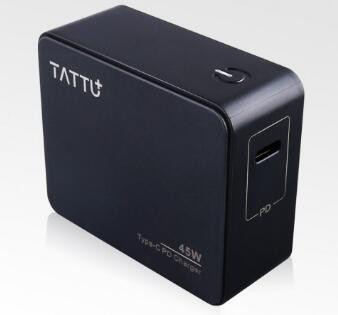Do you learn more about USB type C
Sep 27th 2018
Recently, there have been some rumors swirling on the internet about USB-C finally coming to the iPhone in the future. While they haven’t been confirmed, they have people excited about the future potential of USB-C. We already have USB-C for Apple laptops, so it makes sense that we will see USB-C for the iPhone.
With this recent news, we figured now was as good a time as any to revisit the topic of this new USB standard. Join us as we look at what USB-C is, why it’s the future, and so much more.


What is USB Type-C?
USB-C is a 24-pin USB connector system that originally released in mid-August of 2014. It is used to charge a ton of different devices, and is much simpler and easier to use than micro-USB as it is reversible and you won’t spend minutes trying to plug your device in the right way. The idea behind it is that you will eventually only need a single cable to connect everything you need. Convenience in a nutshell. Most USB-C cables also support USB 3.1 (now 3.2) as a standard, which means faster charging and faster data transfer speeds. More and more pieces of technology and gear are adopting USB-C and this is likely going to continue into the future. This means that one day, as USB-C becomes standard, everyone (no matter what phone or device they have) will be able to use the same cable for charging devices and transferring data.
The Good: What are the Benefits?
There are a variety of different benefits that could be why USB-C is seen as the future of cables. First and foremost, the fact that it is universal and reversible is definitely a major plus. It will always plug in the first time, and is capable of working with devices all of kinds including computers, phones, and more. Another huge benefit is the speed at which it works. It can not only transfer data quicker than traditional USB devices, but can also allow for faster charging, which is important in our always-connected lifestyles. These cables can output 100W of power, and transfer data up to 20 gigabits per second. The size and flexibility of the cables and ports are also very compact, which is a positive for transportation and use with smaller devices. When space is limited, who wants to pack more?The Bad: What are the Drawbacks?
So while there are many benefits surrounding USB-C, there are also a couple of drawbacks. First of all, some have expressed concern over cheap USB-C cables. With how much power these cables can carry, using a a knock-off, off-brand or cheap cable could potentially damage yourself or your devices. Another drawback is the confusion around USB-C and internal specifications. USB-C simply refers to the connector and there are a variety of different types that will serve different purposes. Some will be capable of faster charging or data transfer than others and if you want a cable that can power devices, you will need one that supports USB Power Delivery. Because widespread adoption of USB-C is still relatively new, a lot of devices you use might not support USB-C, so it could be a couple of years before you are using this regularly with all of your devices. But with the new iPhone potentially embracing USB-C, we suspect it won’t be long before nearly everything is using it.
The Funky: How Does it Compare to Other USB Standards?
In addition to offering faster delivery and quicker charging compared to other USB standards, the physical look and design is different. The USB-C connector is smaller, which is good for the future as devices are getting smaller and thinner. They also have a USB-C connector on both sides of the cable, which is different than the USB devices most of us are used to. No longer do you need to find the right way to insert the cable. Both sides will work. In addition to its technological benefits and design, USB-C also supports a variety of other protocols via the use of adapters, which can make your cable and cord management much cleaner and easier. USB-C can also both send and receive power and this power can be transferred at the same time that data is transmitted. If you want to learn more about USB power charging and the differences between the different standards, be sure to check out this handy guide. We understand it’s not always clear, especially if you aren’t a total tech geek. In conclusion, we hope this article has helped you learn and understand about USB-C and the many features, benefits and drawbacks of the technology. While it is yet to be seen if and when Apple will bring the USB-C technology to the iPhone, it is certainly an exciting possibility. As an early adopter of this technology by integrating it into our power banks, we are definitely looking forward to potentially seeing these rumors come to fruition. Source: http://blog.ravpower.com/2018/07/getting-to-know-usb-c/Related Product Recommend:
 |
Tattu 45W USB Type C Power Delivery 2.0 Wall Charger for Phone, Macbook and More. | ||
|
★★★★★ |
|||
